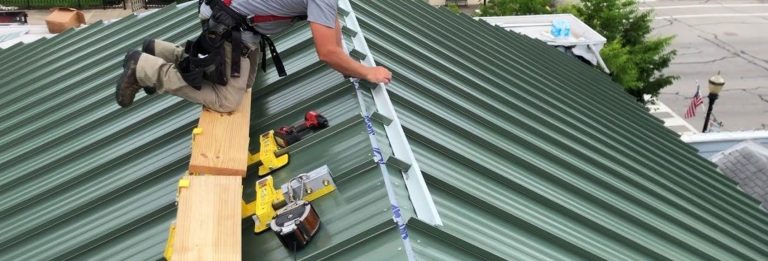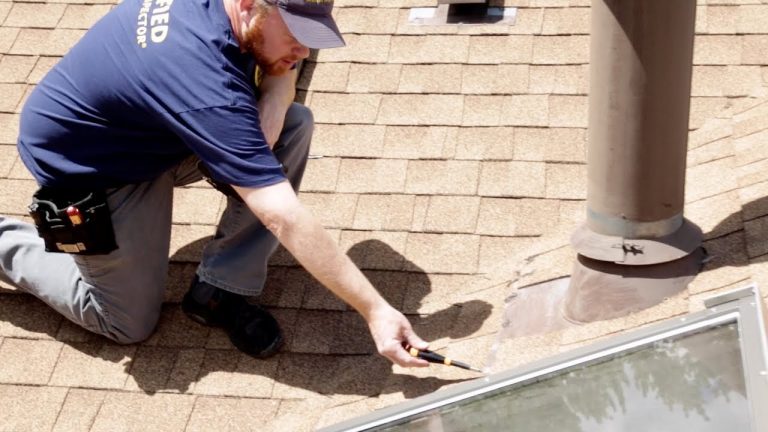
When it comes to maintaining your roof, two essential strategies are often discussed: inspection and repair. Each plays a critical role in the longevity and performance of your roofing system, but understanding their differences and how they complement one another can help homeowners make the best choices for their properties. Roofing issues can be costly and disruptive, but whether you’re dealing with a minor leak or assessing the overall health of your roof, knowing when to inspect and when to repair is key to preventing larger, more expensive problems in the future. In this article, we’ll explore the importance of both roofing inspections and repairs, compare their benefits, and discuss the best approach for maintaining a durable, long-lasting roof.
The Role of Roof Inspections
A roof inspection is an essential process that helps identify any potential problems before they become serious issues. The primary purpose of an inspection is to assess the condition of the roof and detect any underlying problems that may be hidden from plain sight. Regular roof inspections are an important aspect of proactive maintenance and can save homeowners significant amounts of money in the long run by catching small issues early on.
Key Benefits of Roof Inspections
-
Early Detection of Problems: One of the most significant advantages of regular roof inspections is the early detection of problems. A roof can show subtle signs of wear and tear that, if left unchecked, can escalate into major issues, including leaks, mold growth, or structural damage. During an inspection, roofing professionals can identify cracked shingles, deteriorating flashing, or clogged gutters—issues that may go unnoticed by an untrained eye.
-
Prevent Costly Repairs: By catching roofing problems early, inspections can prevent the need for costly repairs down the road. For example, a small leak can be easily patched during an inspection, preventing water from damaging the attic insulation or compromising the structural integrity of your home. Delaying repairs on minor issues can often result in expensive fixes later.
-
Maintain Warranty and Insurance: Many roofing warranties and homeowner’s insurance policies require regular roof inspections. Without proper documentation of inspections, homeowners may void their coverage. Regular inspections also ensure that your roof complies with the terms of your warranty, protecting you financially if more significant issues arise.
-
Increased Roof Lifespan: Routine inspections help preserve the life of your roof. By ensuring that the roofing materials are in good condition and there are no early signs of damage, inspections allow your roof to perform at its best for as long as possible. A well-maintained roof can last years longer than one that’s neglected, saving you the cost of premature replacement.
What to Expect During a Roof Inspection
A professional roofing inspection typically involves a detailed examination of both the exterior and interior of the roof. This includes:
-
Exterior Inspection: The roofing contractor will check for missing or damaged shingles, cracks in the flashing, and other visible signs of damage. The gutters will also be examined for blockages or damage that could affect the roof’s drainage system.
-
Interior Inspection: In the attic, the contractor will look for signs of water stains, mold, or sagging beams, which may indicate a leak. The insulation will also be checked to ensure it’s not damp or compromised.
-
Detailed Report: After the inspection, the roofer will provide a detailed report of their findings, including any recommended repairs or maintenance.
The Role of Roof Repairs
While inspections are vital for identifying potential problems, roof repairs are the next step in addressing those issues. Roof repairs are necessary when damage or wear is detected during an inspection or when leaks or other problems are already present. Immediate repairs can prevent further damage and help extend the life of the roof.
Key Benefits of Roof Repairs
-
Immediate Fixes for Leaks and Damage: One of the most significant reasons for scheduling roof repairs is to address leaks and damage that can’t be overlooked. Leaks, in particular, can lead to significant water damage in your home, including the risk of mold growth, structural decay, and damaged personal belongings. Prompt repairs are essential for preventing this.
-
Cost Savings Over Time: While repairs may seem expensive at first glance, they are typically much cheaper than waiting until a small problem becomes a large one. For example, repairing a few missing shingles is far less costly than dealing with water damage caused by a leak or replacing an entire roof due to neglect.
-
Enhance Energy Efficiency: A damaged roof can lead to energy loss, especially if insulation is compromised or there are leaks that allow heated or cooled air to escape. Roof repairs can restore the roof’s integrity, improving the home’s overall energy efficiency and potentially reducing utility costs.
-
Prevent Future Damage: Roof repairs not only fix existing issues but also prevent further damage. Replacing damaged shingles, repairing flashing, or fixing a leaky pipe boot can stop water from infiltrating the roof and causing more extensive damage in the future.
Common Roof Repair Issues
Roof repairs can address a wide range of problems, including:
-
Shingle Replacement: Cracked, curling, or missing shingles are a common issue that can lead to leaks if not repaired quickly. Replacing damaged shingles can restore the roof’s protective barrier.
-
Flashing Repair: If the flashing around chimneys, skylights, or vents becomes loose or damaged, it can cause leaks. Re-sealing or replacing flashing is a common roof repair.
-
Gutter Repairs: Blocked or damaged gutters can result in water overflow, leading to roof damage or water seeping into the home. Cleaning and repairing gutters ensures proper drainage.
-
Leak Repairs: Water leaks, especially those that have caused visible damage to ceilings or walls, need immediate attention. Addressing the source of the leak and repairing any affected areas is crucial to preventing further damage.
Inspection vs. Repair: What Works Best for You?
So, what works best for your roof: an inspection or a repair? In most cases, the answer is both. Inspections and repairs go hand in hand in maintaining the health of your roof.
When to Opt for a Roof Inspection
-
Routine Maintenance: If your roof is relatively new or in good condition, a routine inspection is the best option. Regular inspections, performed once or twice a year, will help catch minor issues before they turn into larger problems.
-
After Severe Weather: If your area has experienced a significant storm, high winds, or hail, it’s wise to schedule an inspection. Even if no damage is visible, the roof may have suffered wear that requires professional attention.
-
Warranty or Insurance Requirements: If your roofing warranty or insurance policy requires regular inspections, be sure to schedule them to maintain your coverage.
When to Opt for a Roof Repair
-
Visible Leaks or Water Stains: If you notice water stains on the ceiling or leaks during rainfall, it’s time for a roof repair. Leaks can quickly escalate, causing significant damage to your home if not addressed immediately.
-
Extensive Damage: If your roof has missing shingles, cracked flashing, or other signs of substantial damage, repairs are necessary. Ignoring these issues can lead to further complications, including structural damage and mold growth.
-
Energy Loss: If your home feels drafty or your energy bills are higher than usual, your roof may be compromised. Repairing the roof can help restore energy efficiency and lower costs.
Conclusion
Roof inspections and repairs are both essential components of maintaining a safe, durable roofing system. Inspections serve as a preventative measure, identifying potential issues before they escalate, while repairs provide immediate solutions to current problems. By combining regular inspections with timely repairs, you can ensure the long-term health of your roof, avoid costly damage, and protect your home and belongings. Whether you’re addressing small repairs or planning for future maintenance, taking proactive steps today will result in a more reliable and longer-lasting roof for years to come.
You May Also Like
Innovative Solutions for Ref ...
14 August 2025
Why Your Roofing Strategy Ne ...
10 April 2025
Top 10 Inspection Tips for B ...
20 December 2024
Popular Post
Expert Insights on Installing Solar Power Systems
28 October 2025Local Plumbing Expertise You Can Trust in Killeen
22 August 2025Innovative Solutions for Refurbishing Commercial Spaces
14 August 2025How to Improve Your Home with Valuation and Agents
30 April 2025Recent Posts
- Expert Insights on Installing Solar Power Systems October 28, 2025
- Local Plumbing Expertise You Can Trust in Killeen August 22, 2025
- Innovative Solutions for Refurbishing Commercial Spaces August 14, 2025
- How to Improve Your Home with Valuation and Agents April 30, 2025
- The Beginner’s Guide to Design in Home Improvement April 24, 2025
- How to Improve Your Home with Maintenance and Repair April 16, 2025
- Why Your Roofing Strategy Needs a Flat Roof April 10, 2025
Archives
- October 2025 (1)
- August 2025 (2)
- April 2025 (10)
- March 2025 (2)
- February 2025 (7)
- January 2025 (8)
- December 2024 (6)
- November 2024 (6)
- October 2024 (6)
- September 2024 (5)
Categories
- Cleaning & Maintenance (5)
- Gardening & Outdoor (5)
- Home Decor (5)
- Home Improvement (5)
- HVAC (5)
- Moving (5)
- Plumbing (6)
- Real Estate & Property (5)
- Roofing (6)
- Smart Home (6)





